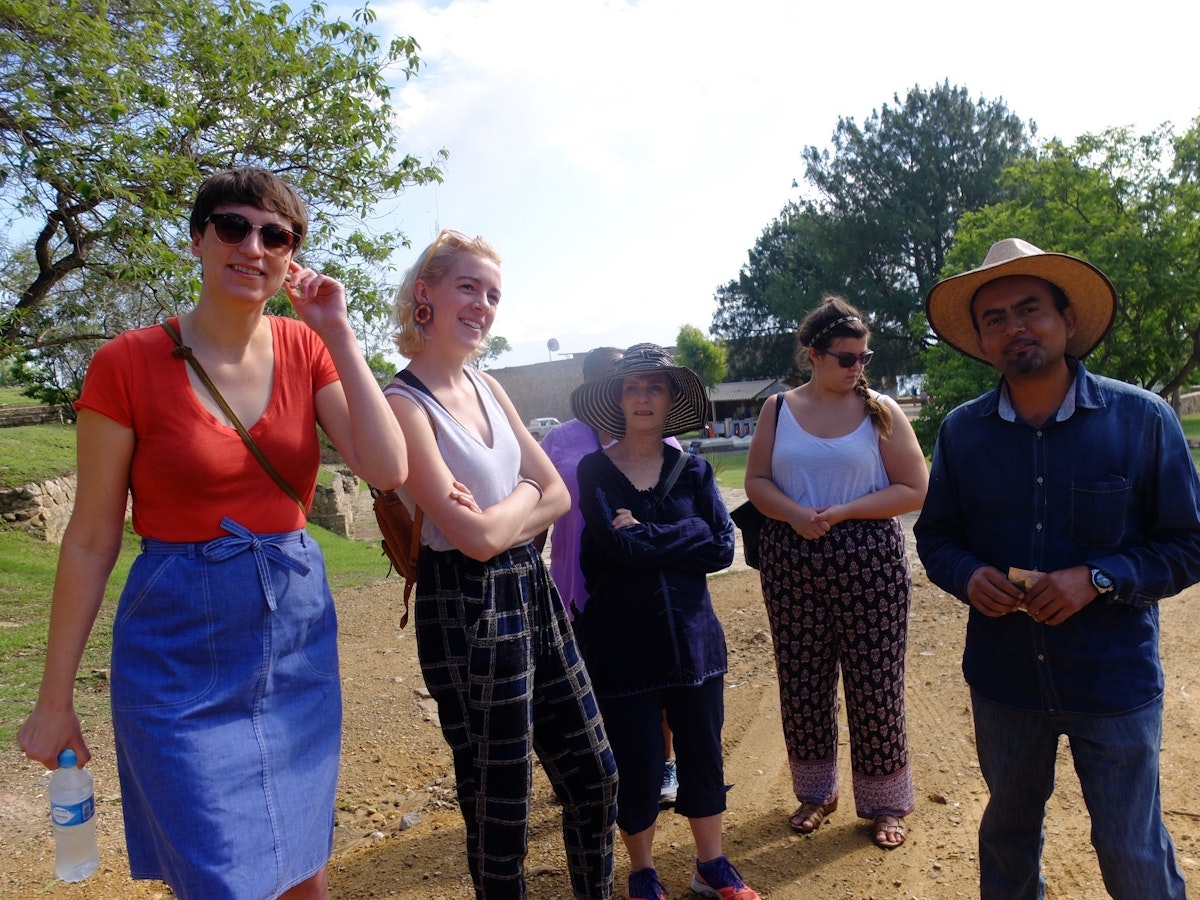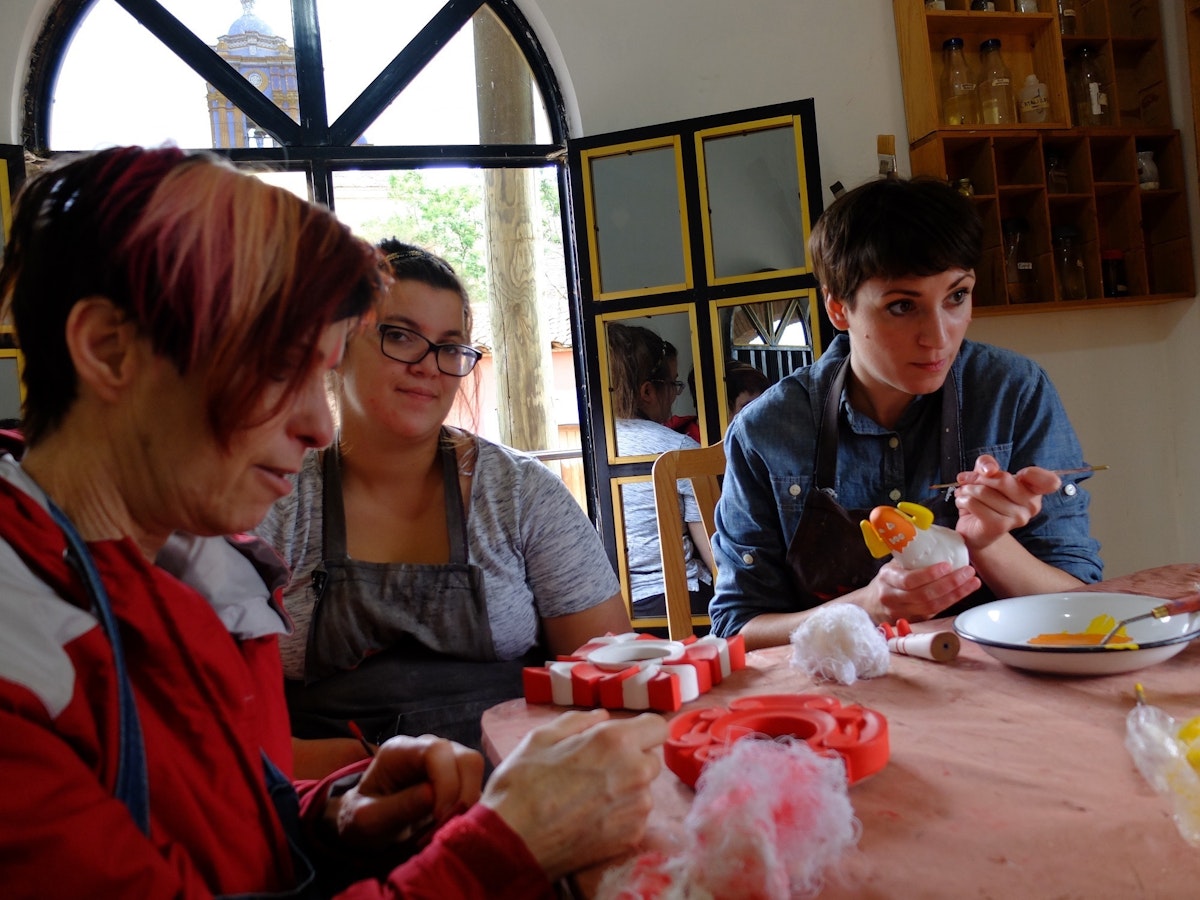Stamps School and SMTD in Oaxaca
In June 2016, Stamps School and School of Music, Theatre & Dance professor Holly Hughes traveled to Oaxaca - the heart of Mexico's Día de los Muertos traditions - with SMTD professor Anita Gonzalez and four U-M students: Mona McKinstry (Stamps BFA '16), Carolyn Gennari (Stamps MFA '17), Mia Massimino (Stamps BFA '17), and Jocelyn Aptowitz (SMTD BTA and LSA BA '18).
Fuelled by a “mini-cube” grant from the University of Michigan Office of Research, the purpose of Holly and Anita's twelve-day trip was to make cross-cultural connections with artists for future collaborations and possible exchanges. The MCube program aims to stimulate innovative research and scholarship by distributing seed funding to multi-unit, faculty-led research teams. This is particularly important for Stamps and SMTD, as professional networks play a critical role in the continuous collaborative mechanisms for getting work seen and shared internationally. Most importantly, these professional networks allow students to continue to interact with artists and to generate new work with them.
“Oaxaca's been on my mind for more than 30 years,” said professor Hughes. “Like most Americans I'm scared to death of Death, but Death is very visible in Oaxaca because it's the center of the Day of the Dead celebration. I wanted to have the opportunity to learn how artists in another cultural context represent this crucial part of life thru performance and visual means.”
Professor Gonzalez added, “Oaxaca is a unique area for indigenous traditions of the Zapotec and Mixtec people and it is a place where a person can find artists working across generations - families where sons and daughters, fathers and mothers, grandmothers and grandfathers have all been working continuously in a single art form such as pottery or weaving or painting. You can see the innovation in traditions coupled with decades of daily practice around artistry.”
At the start of the trip, best-selling author Andrea Valeria and her husband Leon Garcia Soler, a leading political journalist with Mexico's Excelsior newspaper, hosted a meal in Cuernavaca for the U-M cohort, introducing them to regional cultural leaders, including the founder of the Brady Museum and Diego Rivera's daughter, Guadalupe Rivera Marin. The group's travels included engagements in Mexico City, Cuernavaca, Oaxaca, and smaller, rural villages.

In Oaxaca, the group met with artists working in contemporary and traditional forms, assisted in the making of a music video in El Centro de Abastos, and exhibited Stamps/SMTD student work in a new multi-media space run by Saúl López Velarde Pazos and connected to el Museo del Ferrocarril. The group also discussed residency possibilities with Tierra Independiente, a community-based physical theater company. In the villages, the group participated in inquiries around traditional textile making, historic restoration, and alebrije sculpting.
“My favorite activity was learning from restoration artists in Santa Ana Zegache,” said Mona McKinstry (Stamps BFA '16). “It was such honor learning from artists that spend countless hours working meticulously. I realized I could use that attention to detail and patience.”

Summarizing the experience, professor Hughes stated: “Audre Lorde's famous observation that ‘poetry is not a luxury,’ proved true in this city of many cultures and ethnic traditions. It was evident that many Oaxacans were poor, but arts, crafts, music, dance, and performance are not decorative luxuries. Instead, they are one of the main tools that citizens use to make sense of their world, their history, and their future.”
Images by Mona McKinstry.